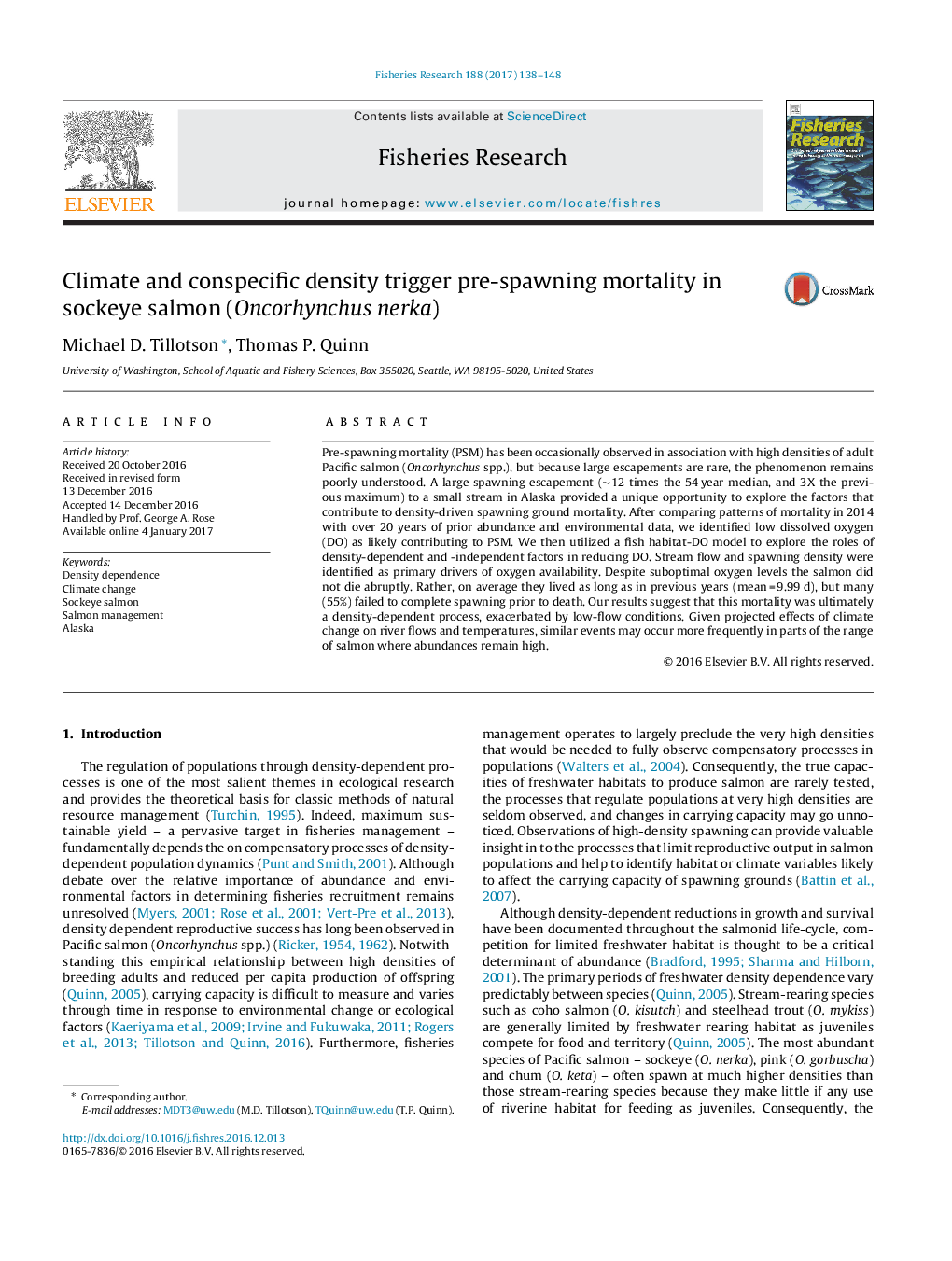| Article ID | Journal | Published Year | Pages | File Type |
|---|---|---|---|---|
| 5765600 | Fisheries Research | 2017 | 11 Pages |
â¢Over 50% of female sockeye died without spawning.â¢Spawning densities were sufficient to drastically reduce available dissolved oxygen.â¢Failure to spawn was most prevalent in reaches with lowest oxygen availability.â¢Reproductive lifespan was above average, but many females never initiated spawning.â¢Premature death was a density-dependent process mediated by environmental conditions.
Pre-spawning mortality (PSM) has been occasionally observed in association with high densities of adult Pacific salmon (Oncorhynchus spp.), but because large escapements are rare, the phenomenon remains poorly understood. A large spawning escapement (â¼12 times the 54 year median, and 3X the previous maximum) to a small stream in Alaska provided a unique opportunity to explore the factors that contribute to density-driven spawning ground mortality. After comparing patterns of mortality in 2014 with over 20 years of prior abundance and environmental data, we identified low dissolved oxygen (DO) as likely contributing to PSM. We then utilized a fish habitat-DO model to explore the roles of density-dependent and -independent factors in reducing DO. Stream flow and spawning density were identified as primary drivers of oxygen availability. Despite suboptimal oxygen levels the salmon did not die abruptly. Rather, on average they lived as long as in previous years (mean = 9.99 d), but many (55%) failed to complete spawning prior to death. Our results suggest that this mortality was ultimately a density-dependent process, exacerbated by low-flow conditions. Given projected effects of climate change on river flows and temperatures, similar events may occur more frequently in parts of the range of salmon where abundances remain high.
Graphical abstractDownload high-res image (336KB)Download full-size image
